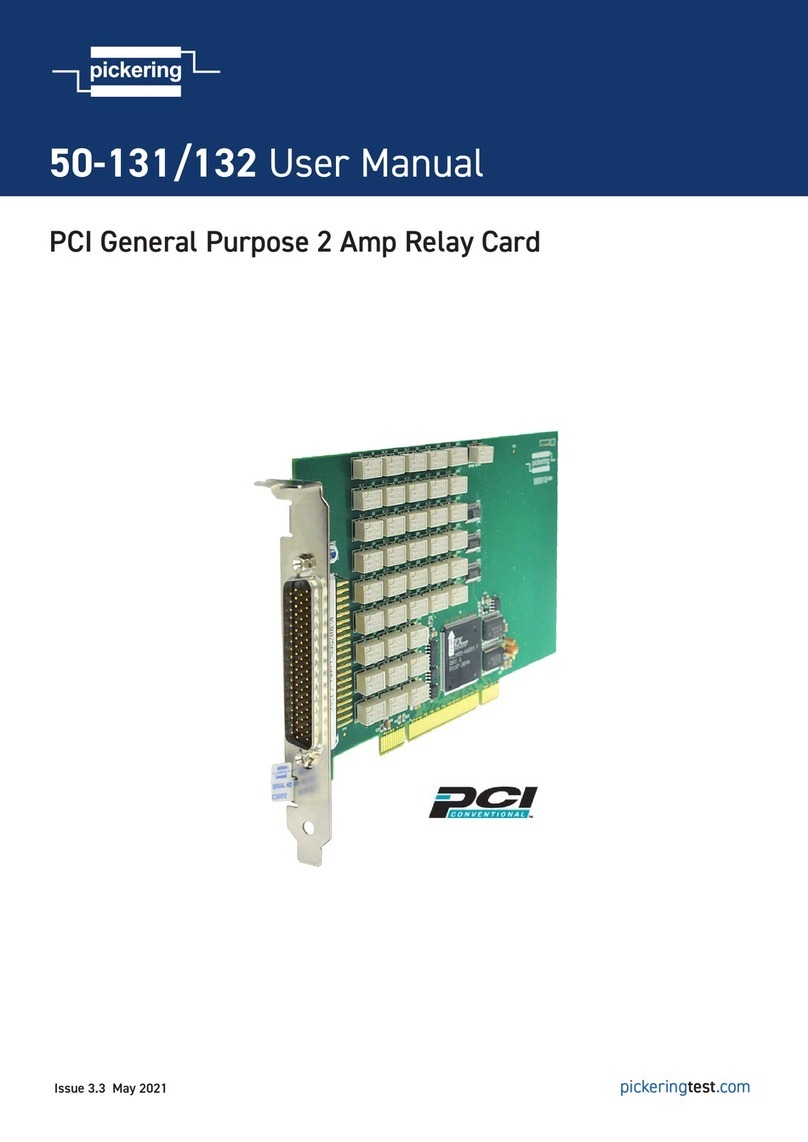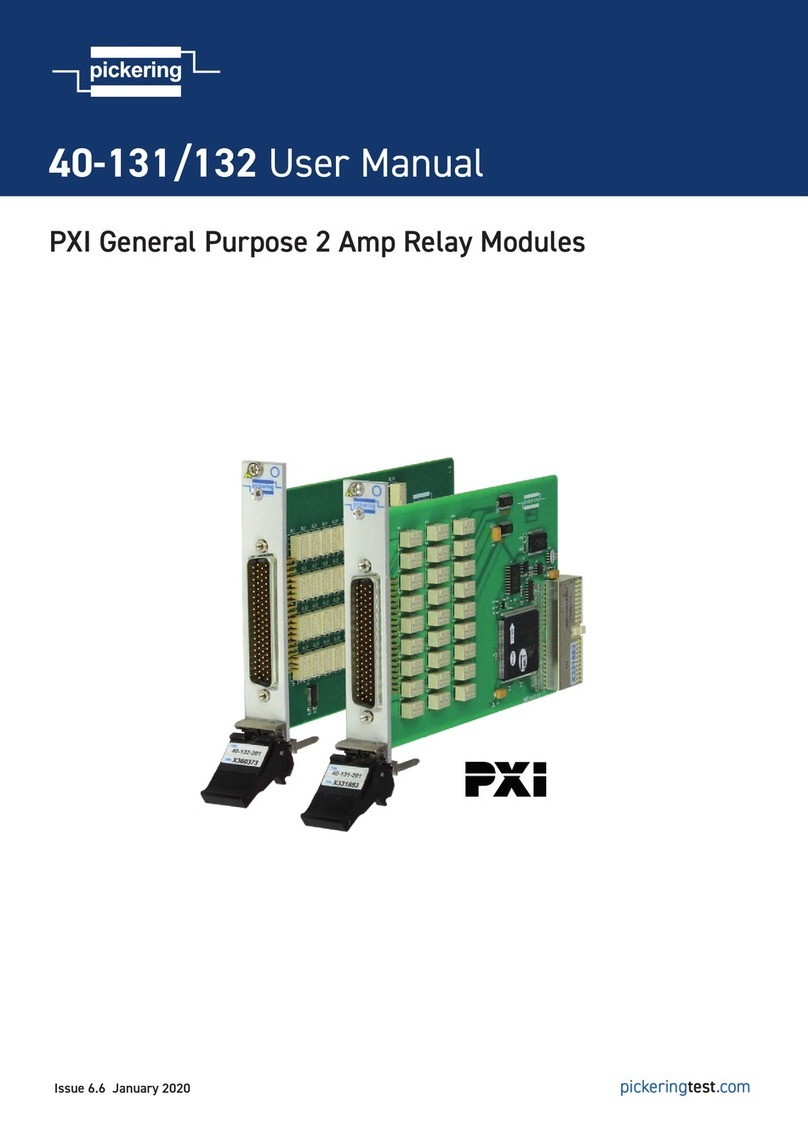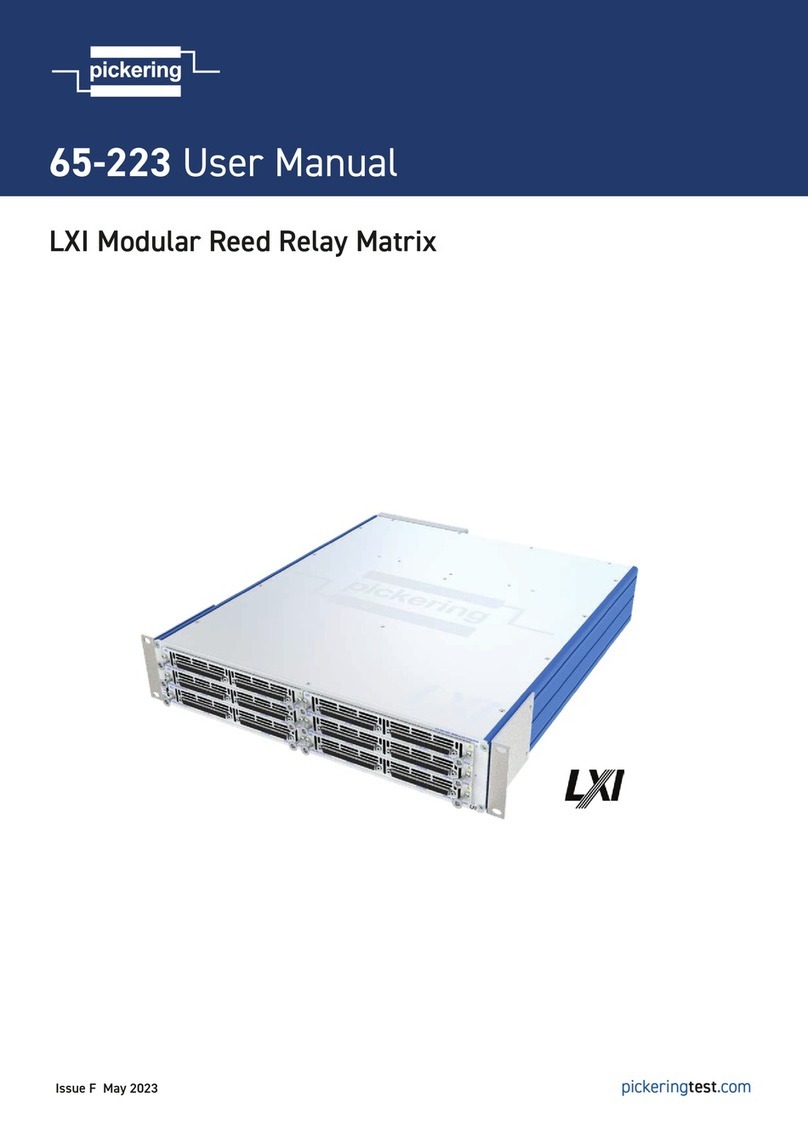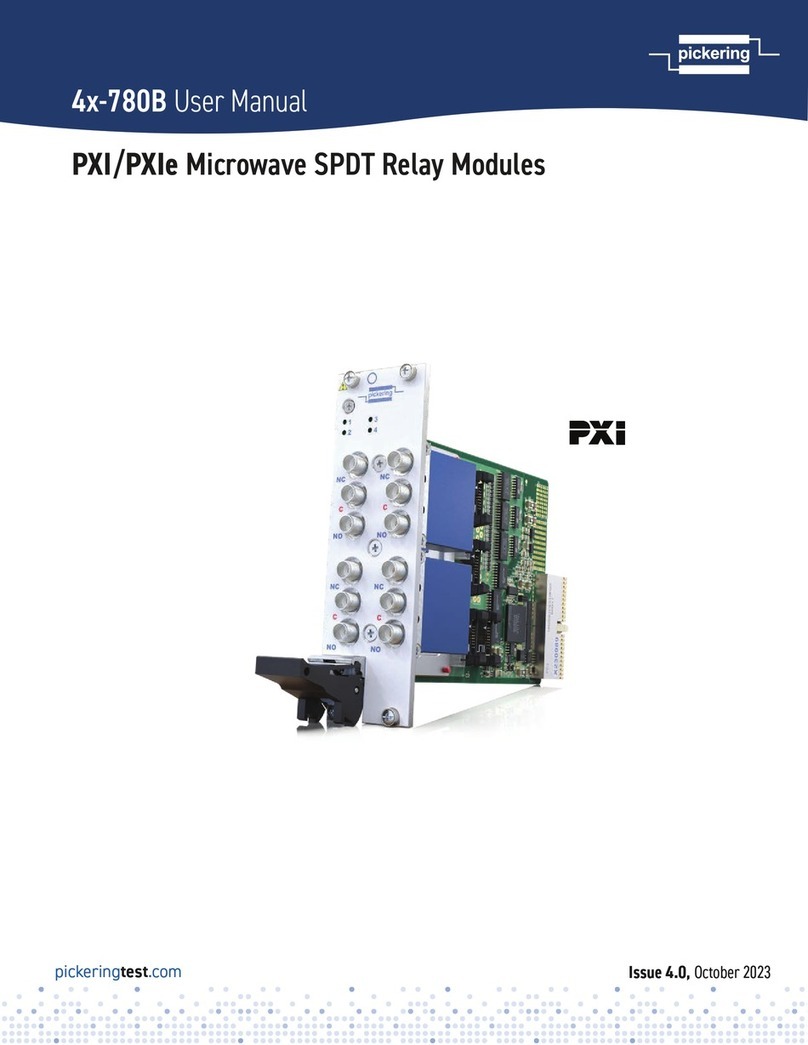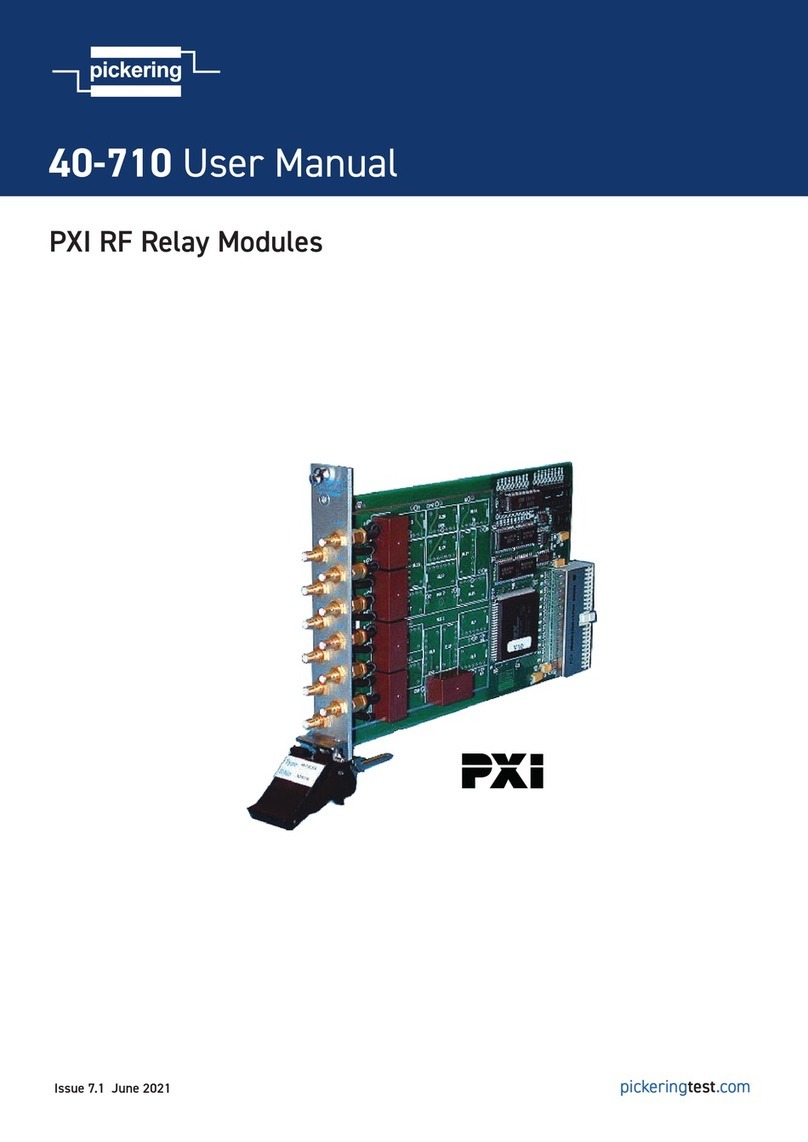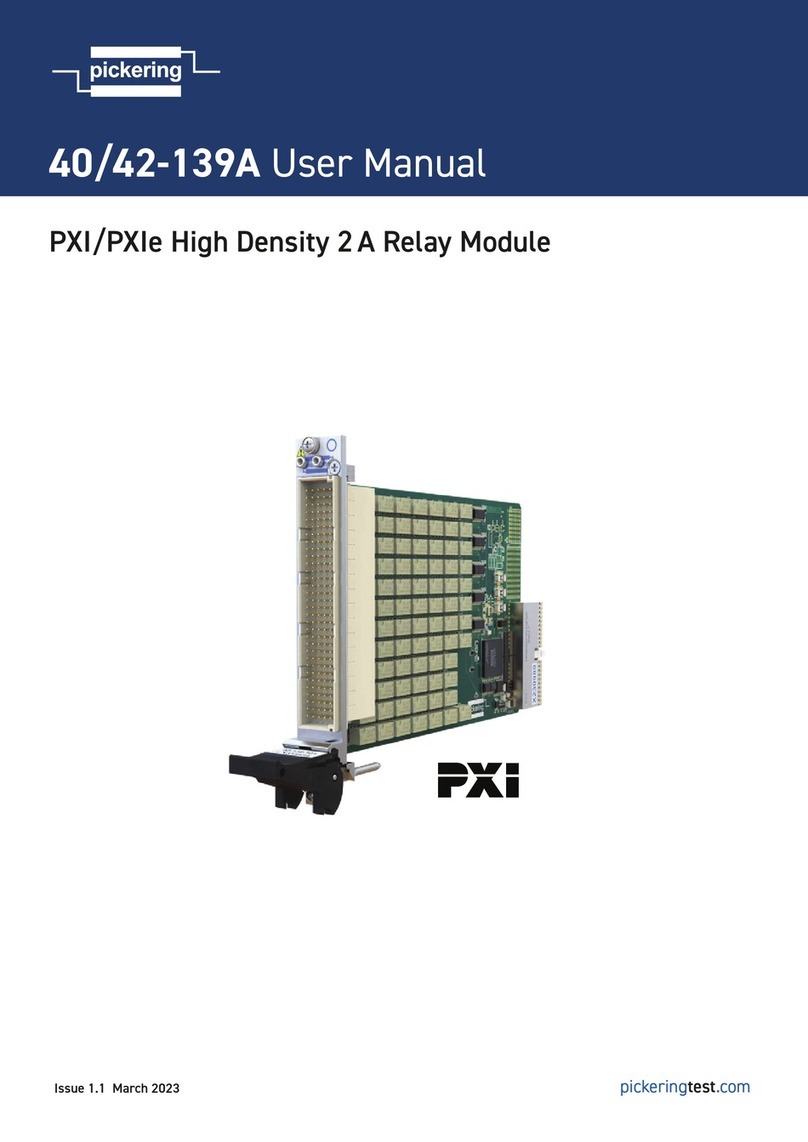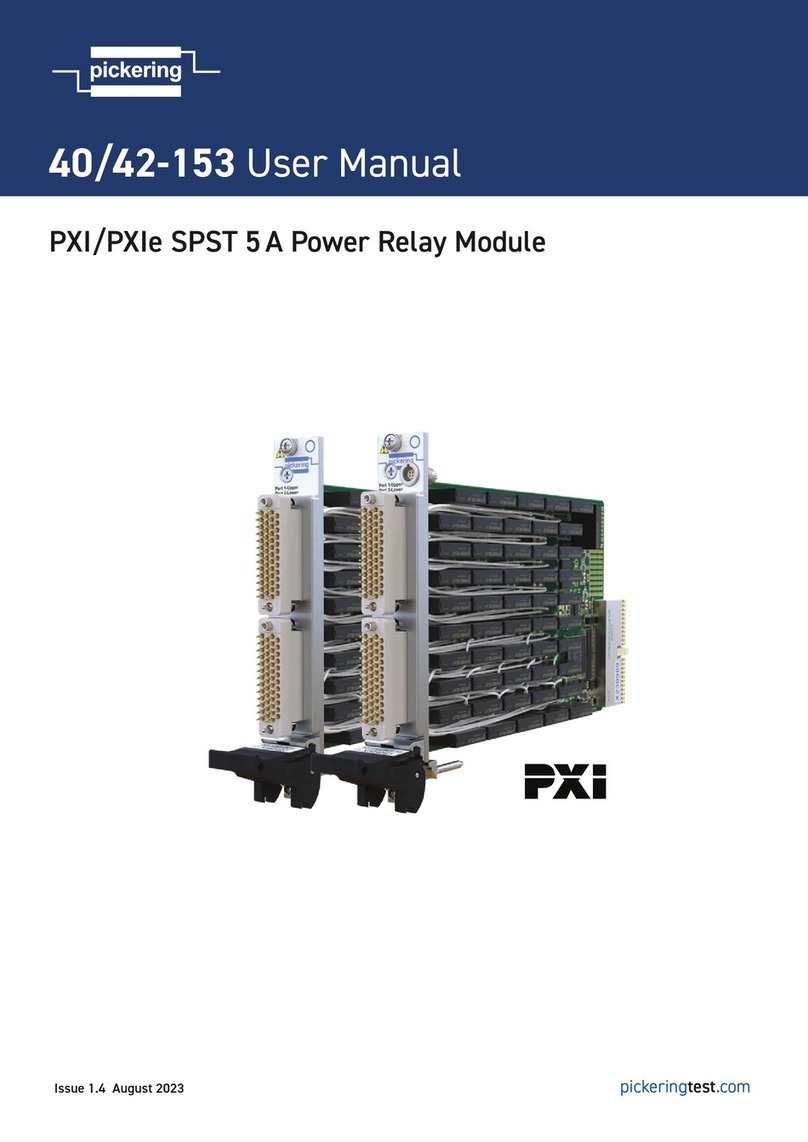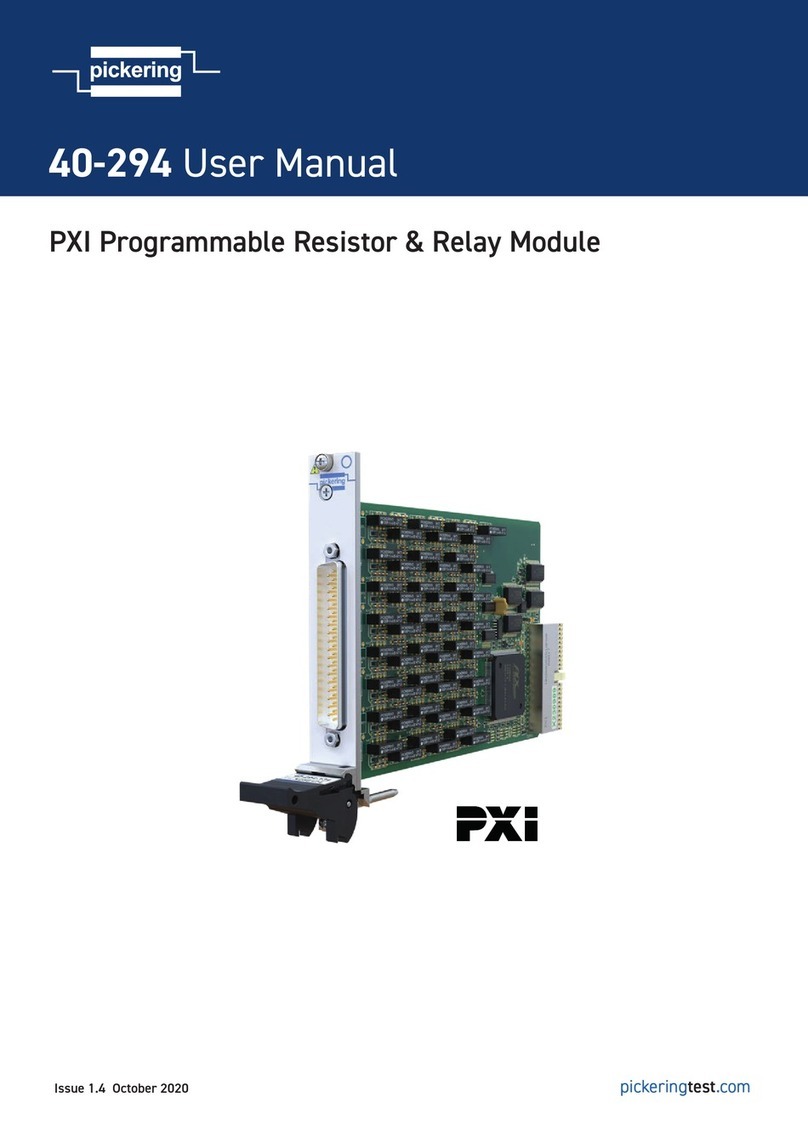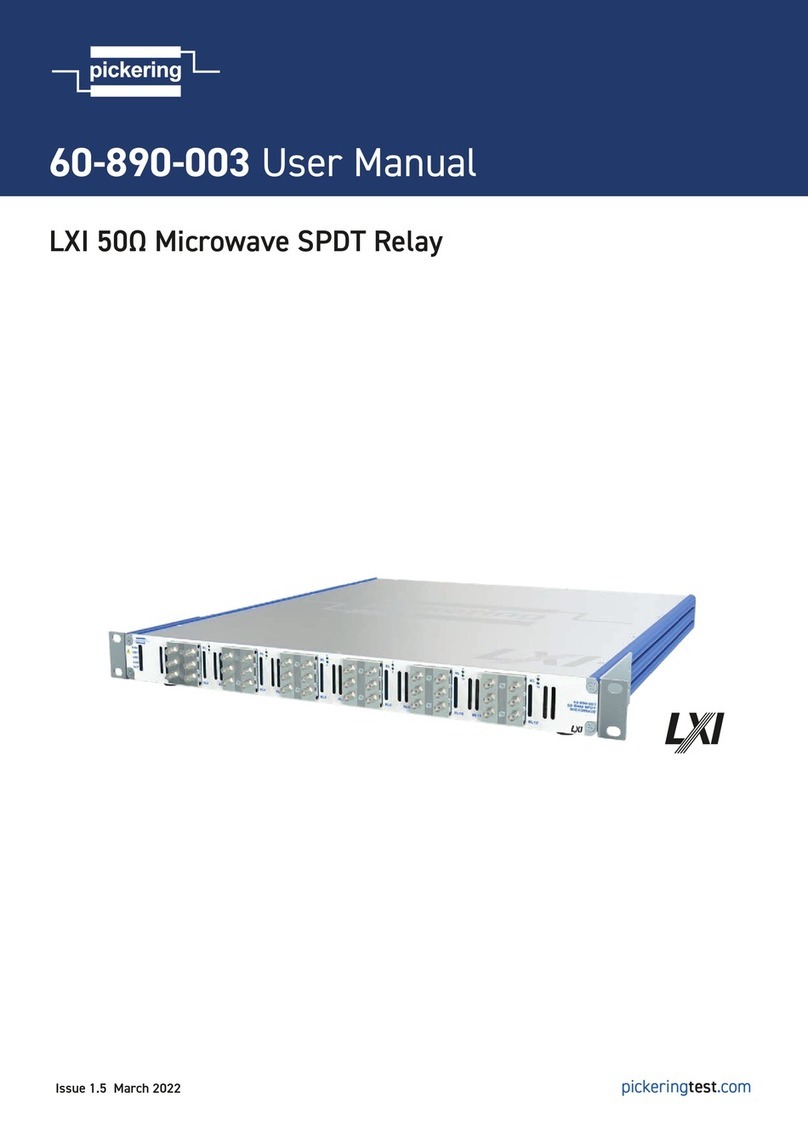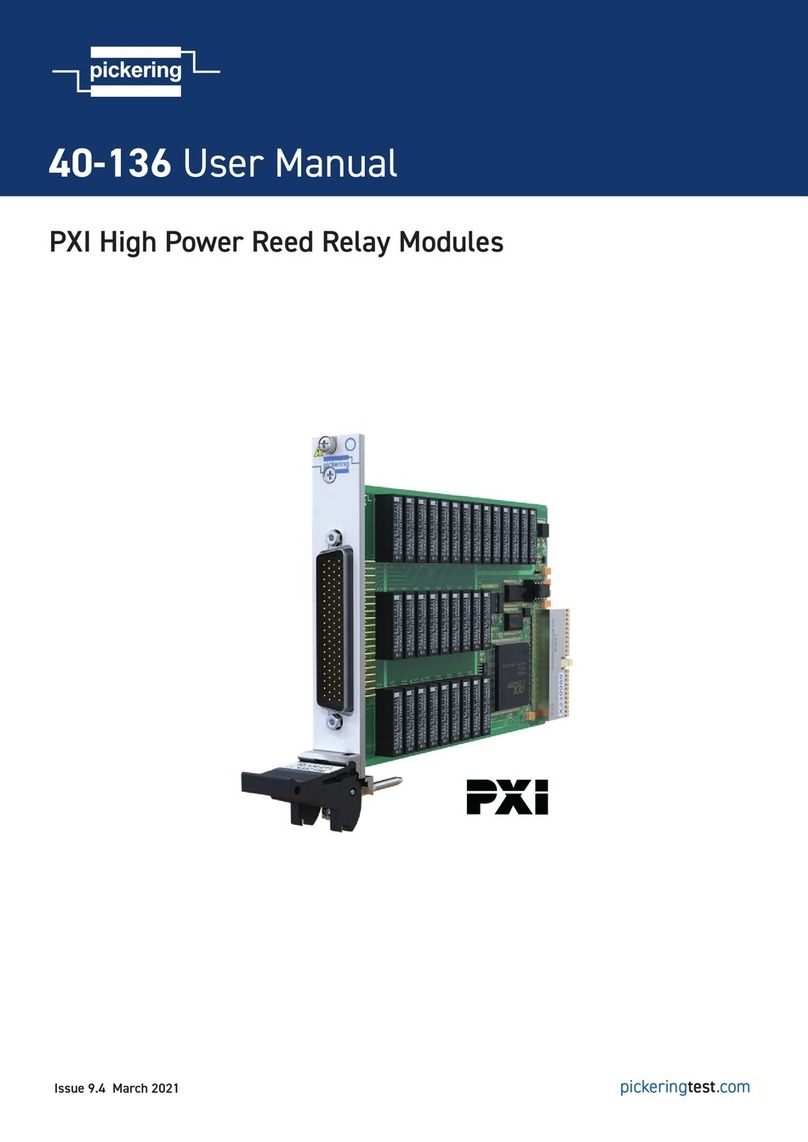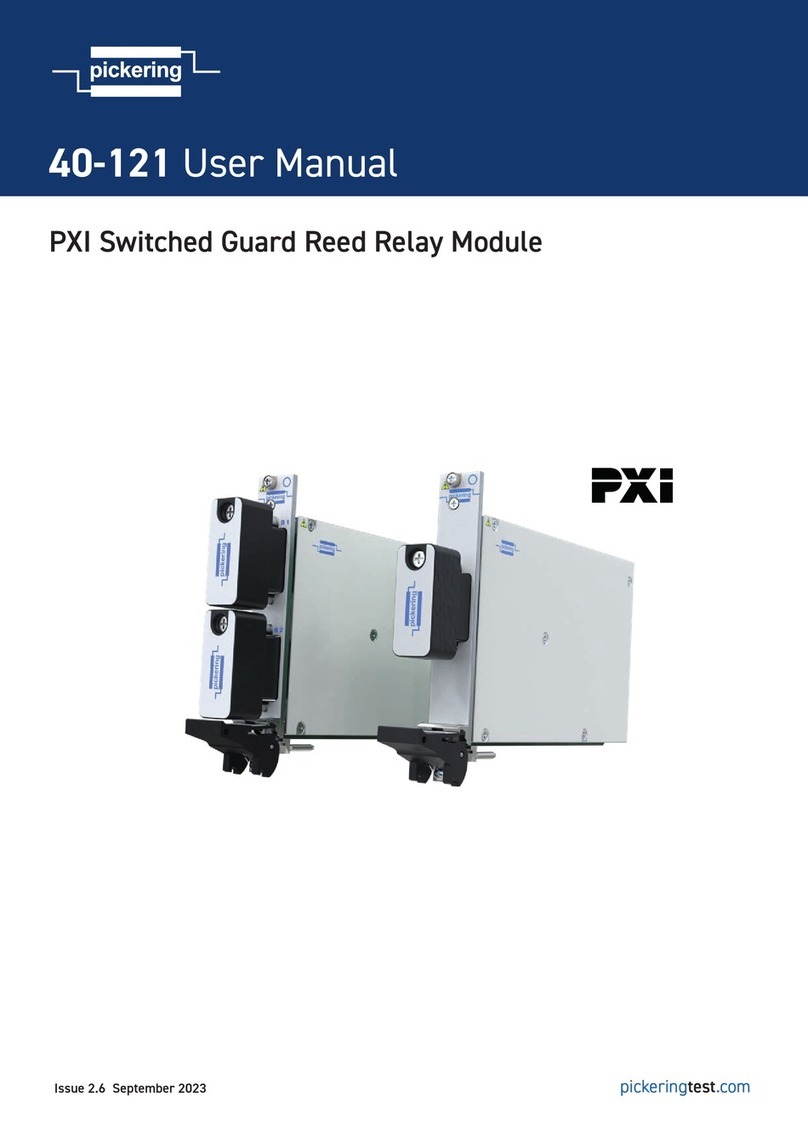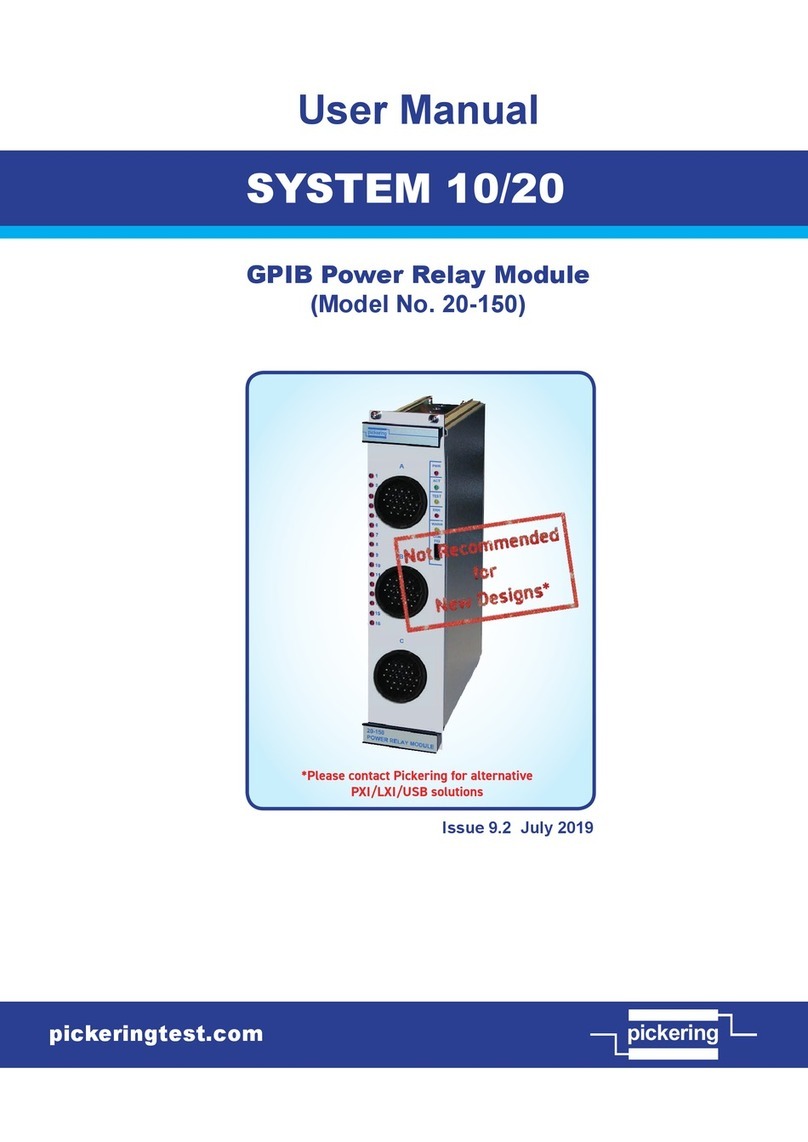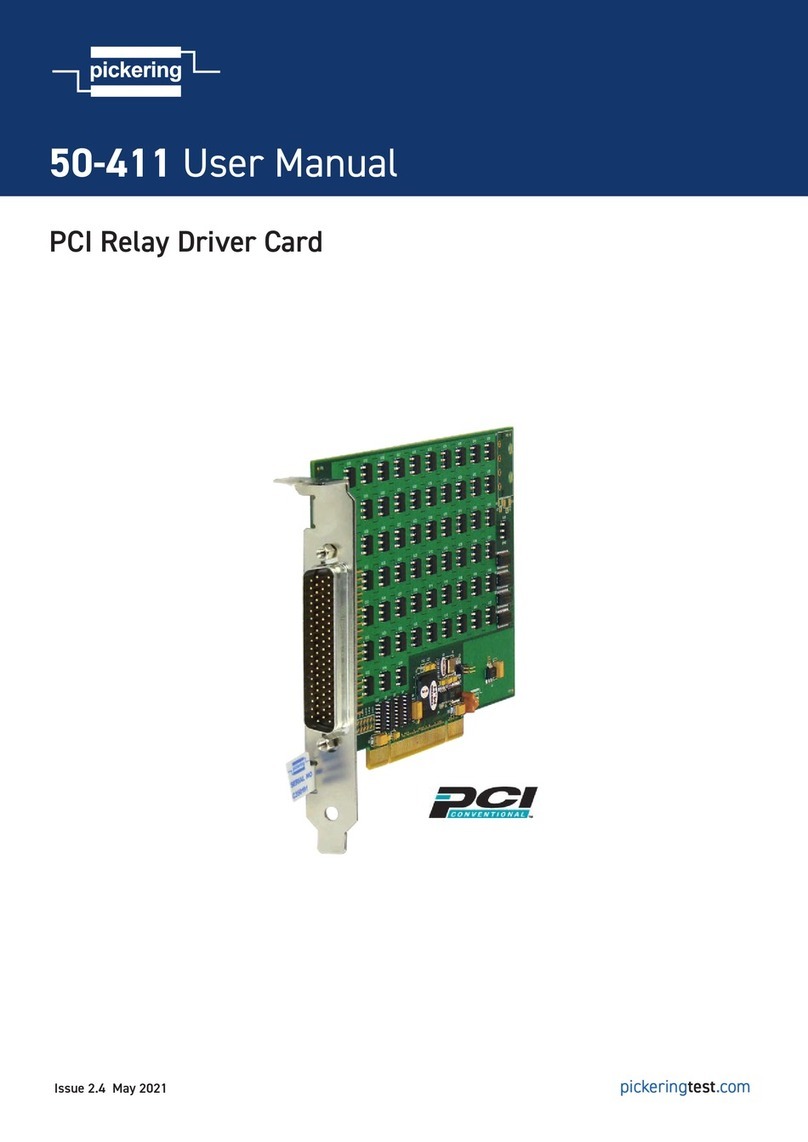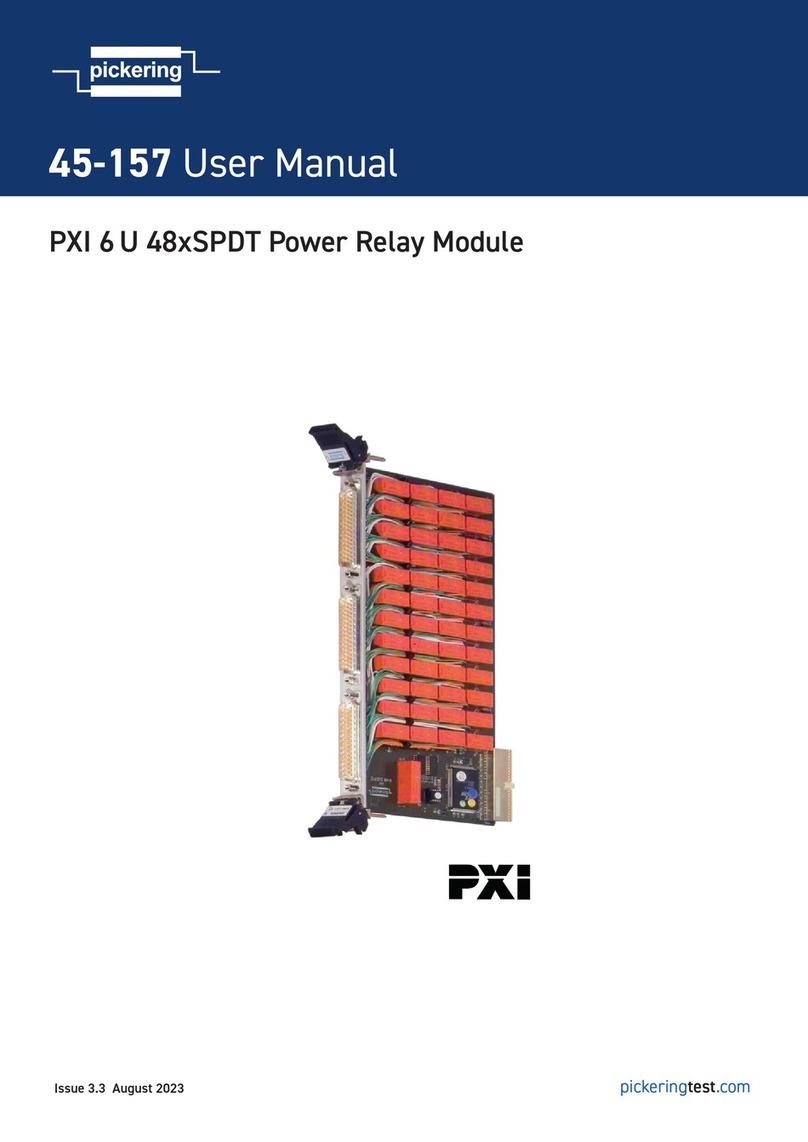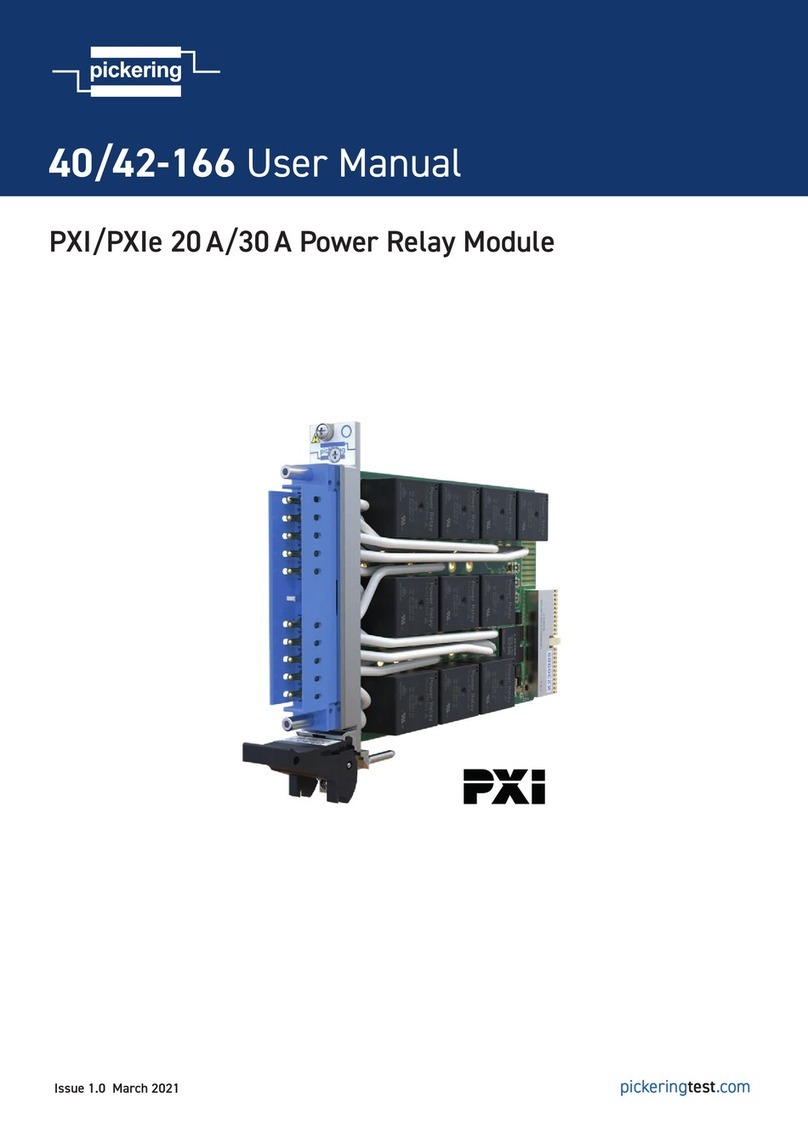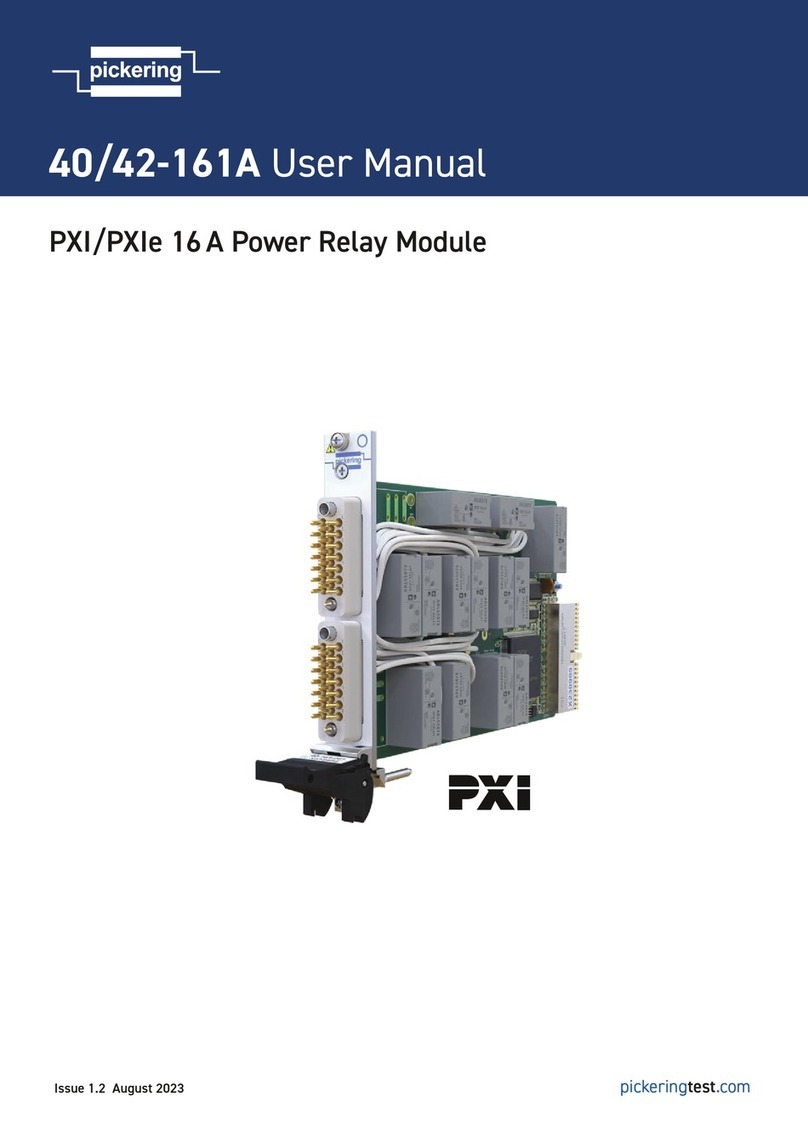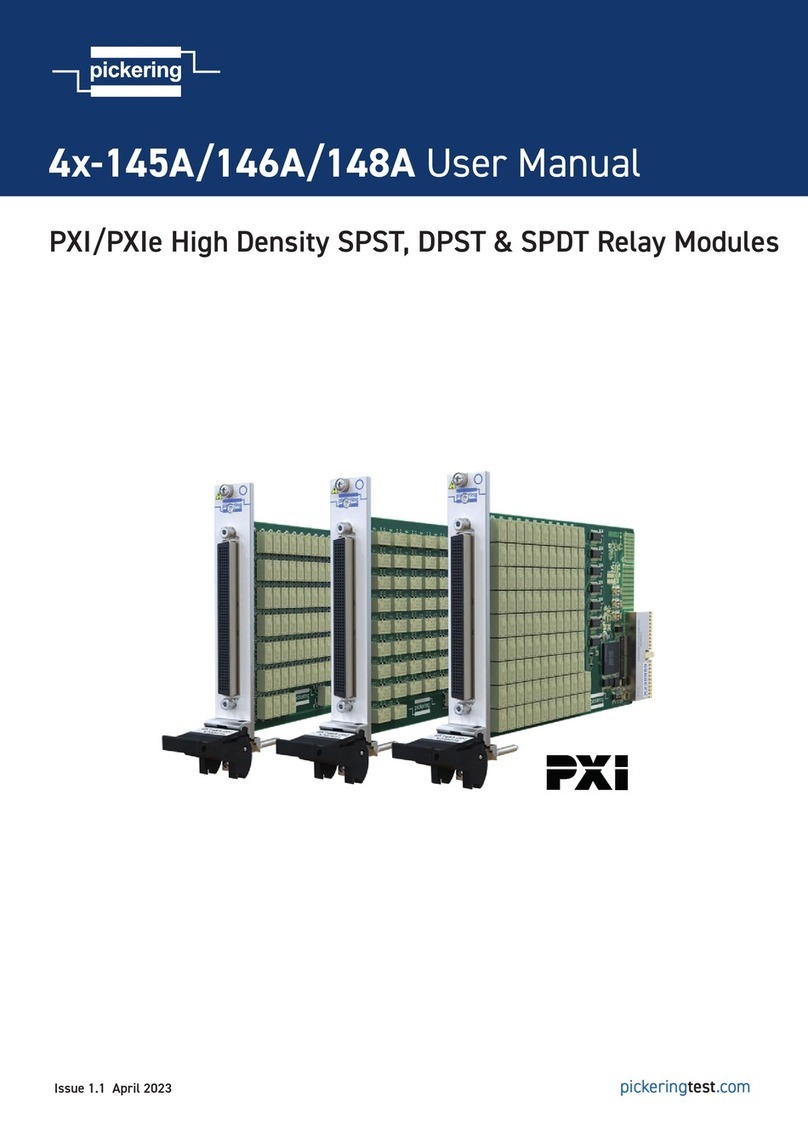
pickeringrelay.com
Page 5
Series 200 User Guide
Soldering
Manual and Oven Soldering
To avoid co-planarity and provide acceptable solder joints and performance a suitable soldering profile must be used. The
recommended soldering temperatures and times are detailed below:
Manual Soldering SMD Reflow
Recommended tip/peak temperature 340 °C/3 secs 245 °C/30 secs
Maximum tip/peak temperature 400 °C/5 secs 270 °C/30 secs
Typical profile - See Graph 1
Notes:
a. Temperatures based on using a lead-free (SAC) alloy.
b. Maximum conditions based on limited trials.
c. Solder wetting is affected by many factors such as storage conditions, handling; choice of alloy,
equipment, ventilation, the board thermal mass and AQL (ref IPC-A-610 class 1,2 or 3).
d. We recommend the customer performs appropriate tests to verify their suitability.
Table 1. SMD Reflow Temperatures/Times
Hand Solder Special Instructions:
The tip should be set to the minimum temperature required to produce a consistent solder joint.
It should first be accurately measured using calibrated equipment (traceable to National and International standards) to
determine whether there is an offset. We recommend any offset is adjusted out by recalibrating the solder iron because the offset
may not be linear across the temperature range.
It may be possible to solder at a lower temperature than indicated and this should always be the aim of an assembler soldering
any type of component. Lower temperatures reduce heat stresses and the possibility of flux within the solder wire being burnt off
too quickly which can create dry joints. Lower temperatures will also help to maximize the tip life.
The solder alloy and tip size will also have an influence. We always recommend using as large a tip size as possible because this
improves the contact. It will also have a better heat mass which means its temperature is less likely to reduce as contact is made
with the component lead and printed circuit board (pcb).
The pcb will also act as a thermal mass. Single layer boards can generally be soldered at a lower temperature than multi-layer
boards or those with extensive grounding.
We recognise there may be other components on pcb that require a higher temperature and/or different tip etc. It may seem
possible to find a set up that works for all components, but this can lead to stresses on the most sensitive components. A
common mistake is to set an iron at its maximum temperature.
In summary, incorrect calibration, tip degradation, insufficient tip contact time/position and thermal mass can mistakenly be
overcome by increasing the temperature. Too hot can be as bad as too cold.!!!
Optimizing the tip size to take into the above variables will usually mean it’s possible to use much lower tip temperature.

